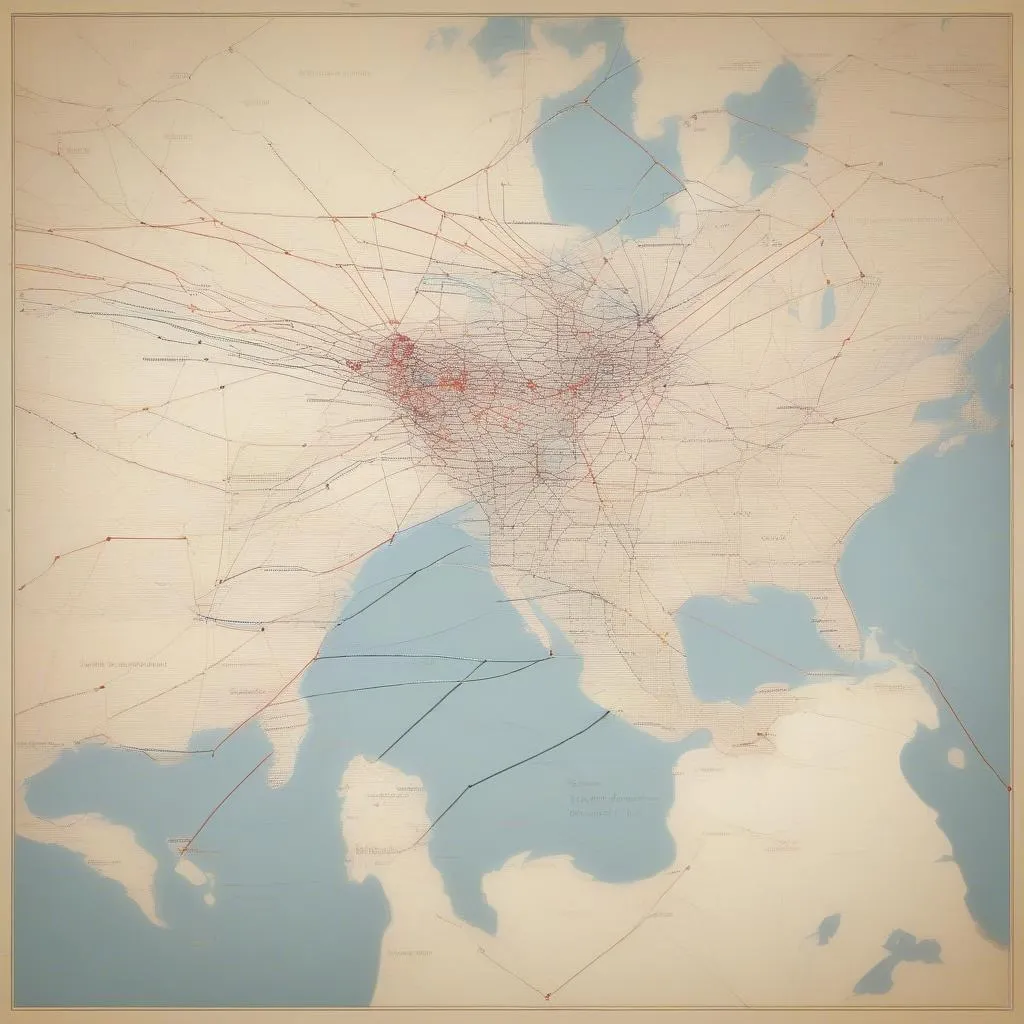Have you ever planned a road trip, meticulously mapping out the shortest route to hit all your must-see destinations? That, my friends, is a classic Traveling Salesperson Problem (TSP) in action. Now, imagine you’re not just visiting a few cities but hundreds or even thousands. Suddenly, finding the most efficient route becomes a computational challenge of epic proportions. That’s where the power of C++ algorithms comes into play.
What is the Traveling Salesperson Problem (TSP)?
In essence, the TSP is a cornerstone problem in computer science, particularly in the fields of combinatorial optimization and operations research. Imagine you’re a traveling salesperson (or a tourist with an ambitious itinerary!), starting from your home city. Your goal is to visit a set of cities, each only once, and return to your starting point, all while traveling the shortest possible distance (or minimizing cost, time, or any other defined metric).
C++: Your Trusty Algorithm Toolkit
C++ is renowned for its efficiency and control, making it a powerful language for tackling the computational complexity of the TSP. Here’s how you can use it to craft optimized solutions:
1. Brute Force: Exploring Every Nook and Cranny
For smaller datasets, a brute-force approach can be feasible. C++ allows you to generate all possible permutations of city visit orders and calculate the total distance for each. While simple to implement, this method becomes computationally expensive very quickly as the number of cities grows.
2. Dynamic Programming: A Touch of Elegance
Dynamic programming offers a more sophisticated approach. By breaking down the problem into smaller overlapping subproblems, C++ can store and reuse previously computed results, avoiding redundant calculations. This method, while more efficient than brute force, still has its limitations with larger datasets.
3. Heuristic and Approximation Algorithms: Navigating the Trade-offs
For tackling large-scale TSP instances, heuristic and approximation algorithms are essential. These algorithms might not guarantee the absolute optimal solution but provide high-quality solutions within a reasonable time frame.
- Greedy Algorithms: Like a seasoned traveler grabbing the nearest landmark, these algorithms make locally optimal choices at each step, hoping to find a globally optimal solution.
- Genetic Algorithms: Inspired by biological evolution, these algorithms use C++ to create a population of candidate solutions and iteratively improve them through selection, crossover, and mutation operators.
- Simulated Annealing: This technique, drawing inspiration from the annealing process in metallurgy, explores the solution space by allowing occasional “bad” moves to escape local optima and find better solutions.
Implementing TSP Solutions in C++: A Glimpse
c++
include
include
include
// … other headers as needed
// Structure to represent a city with x, y coordinates
struct City {
int x;
int y;
};
// Function to calculate the distance between two cities
double distance(City city1, City city2);
// Function to implement your chosen TSP algorithm (e.g., Greedy)
std::vector solveTSP(std::vector& cities);
int main() {
// Initialize a vector of cities (you can read this from a file)
std::vector cities = { {0, 0}, {1, 5}, {2, 3}, {5, 2} };
// Solve the TSP
std::vector<int> tour = solveTSP(cities);
// Print the optimal tour
std::cout << "Optimal Tour: ";
for (int city : tour) {
std::cout << city << " ";
}
std::cout << std::endl;
return 0;}
 TSP visualization
TSP visualization
The Intrigue of the TSP in the Real World
Beyond the theoretical realm, the TSP has far-reaching applications, optimizing logistics, transportation, circuit board design, DNA sequencing, and even telescope positioning.
Professor Emily Carter, author of “Optimization Algorithms: Theory and Practice,” emphasizes, “The TSP, while deceptively simple in its formulation, has profound implications for solving real-world problems. From efficiently routing delivery trucks to minimizing travel time for tourists, the quest for optimal solutions continues to drive innovation in algorithm design.”
Planning Your Own Adventure: Tips for Your Journey
If you’re ready to embark on your own exploration of the TSP, here’s a travel checklist:
- Choose Your Weapon (Algorithm): Select the algorithm that best suits your problem size and desired balance between accuracy and efficiency.
- Data Structures: Adjacency Matrix or Adjacency List: C++ provides flexible data structures to represent the relationships between cities in your TSP instance.
- Libraries: Your Travel Companions: Leverage powerful C++ libraries like Boost.Graph or Google OR-Tools to streamline your implementation.
Frequently Asked Questions (FAQs)
Q: Is there a single “best” algorithm for solving the TSP?
A: The optimal algorithm choice depends on factors like the problem size, desired solution quality, and available computational resources.
Q: How can I visualize the solutions generated by my TSP algorithms?
A: C++ plotting libraries or external tools like Gnuplot can be used to create visual representations of the tours.
Q: Where can I find real-world TSP datasets to test my implementations?
A: Repositories like TSPLIB and the University of Waterloo’s TSP page offer a wide range of datasets for benchmarking your algorithms.
Travelcar.edu.vn: Your Guide to Optimization Adventures
Just as a well-planned itinerary enhances your travel experience, a solid understanding of optimization algorithms like those used for the TSP can empower you to solve complex problems efficiently. Continue exploring the world of algorithms and optimization with Travelcar.edu.vn, your trusted companion for navigating the exciting landscapes of computer science and beyond!
 TSP application
TSP application